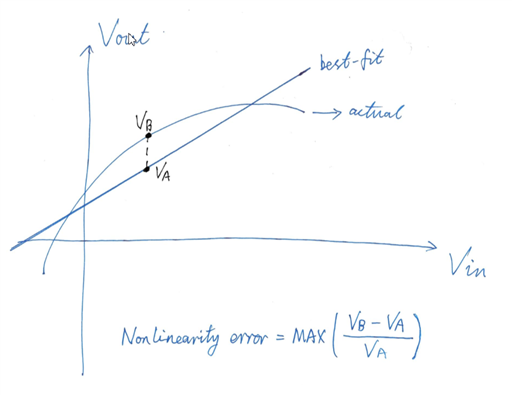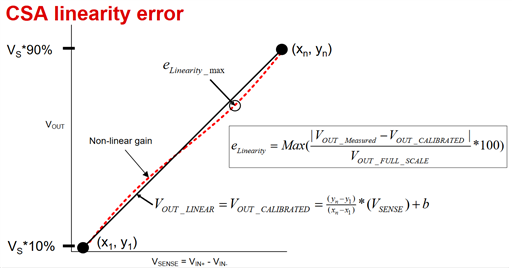Hi team,
May I know how is the spec item 'Nonlinearity error' defined and measured?
1) In my understanding, the nonlinearity error is calculated as follows:
Firstly, we plot output versus input and do the linear regression to get a best-fit straight line.
Secondly, we calculate the deviation of output from this best-fit line and this deviation is divided by best-fit line to transfer into percentage value
Lastly, the maximum percentage value is the nonlinearity error.
Is the nonlinearity error defined in this way?
2) The nonlinearity error got by the above steps is refer to the output.
Has the nonlinearity error in the spec item been referred to the input? Is the value divided by the actual Gain already?
3) How is this nonlinearity error tested? what is the sweep steps?
And how can we guarantee that the maximum deviation is covered by the step?
Thanks for your answer in advance.




